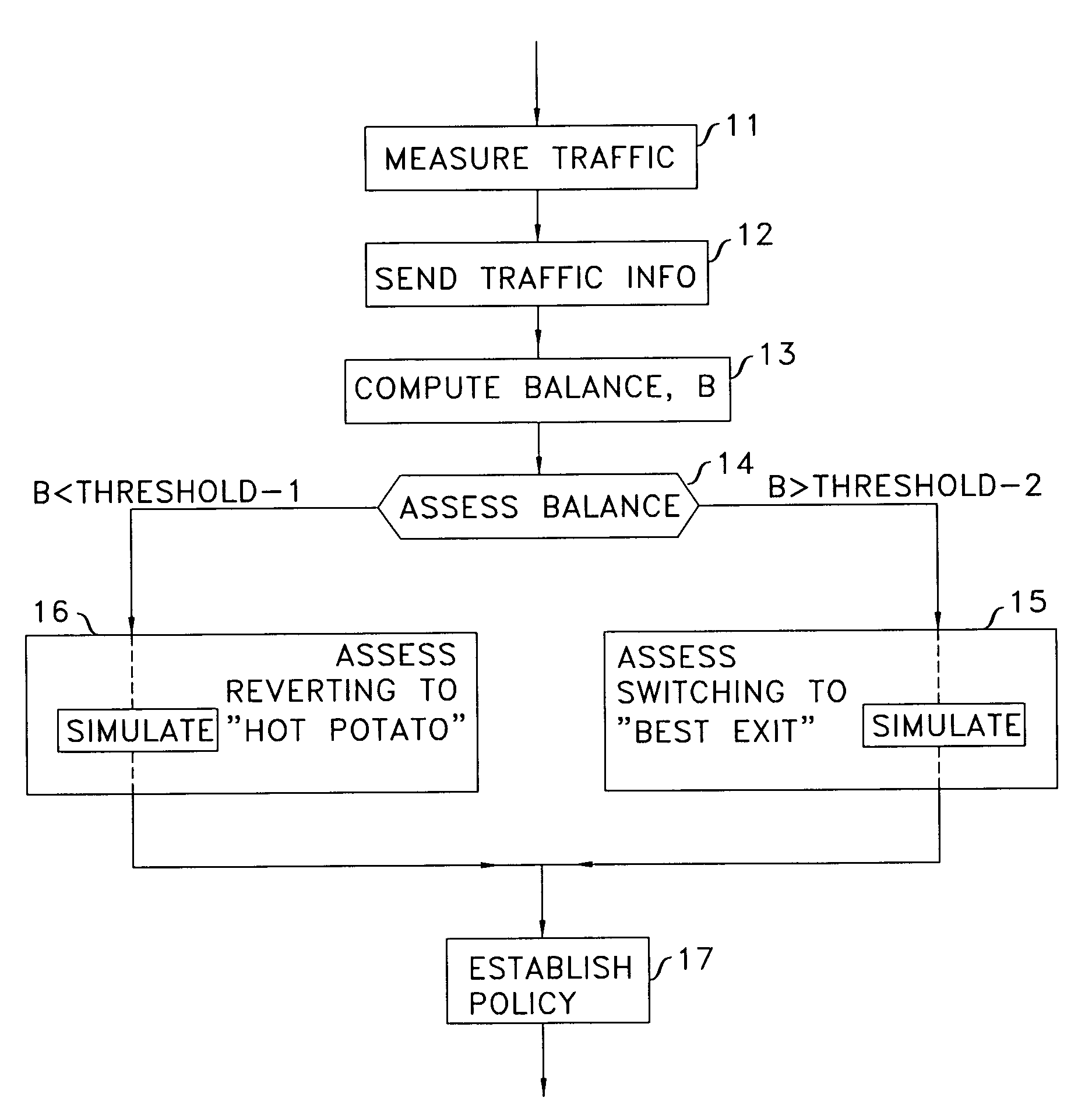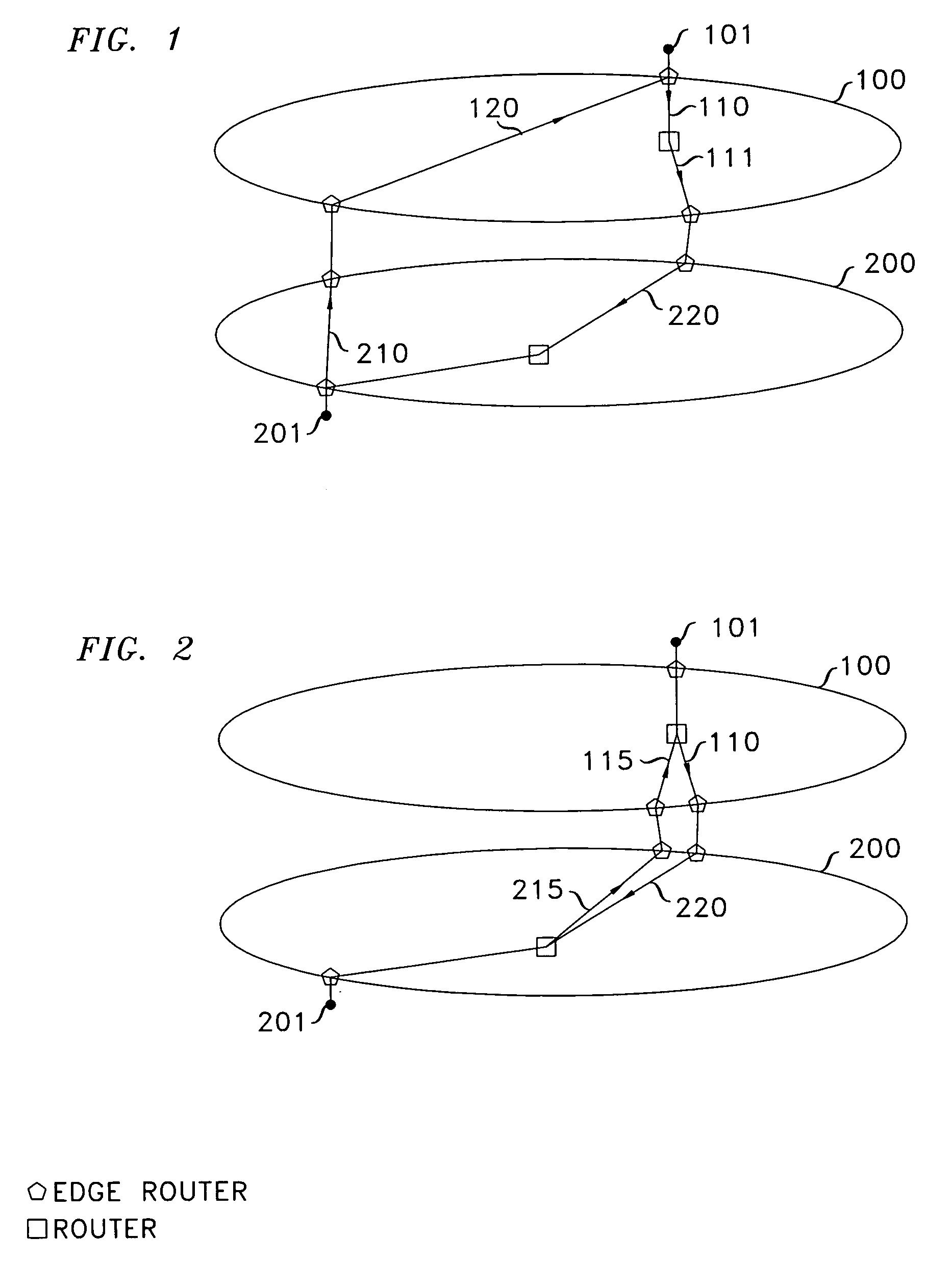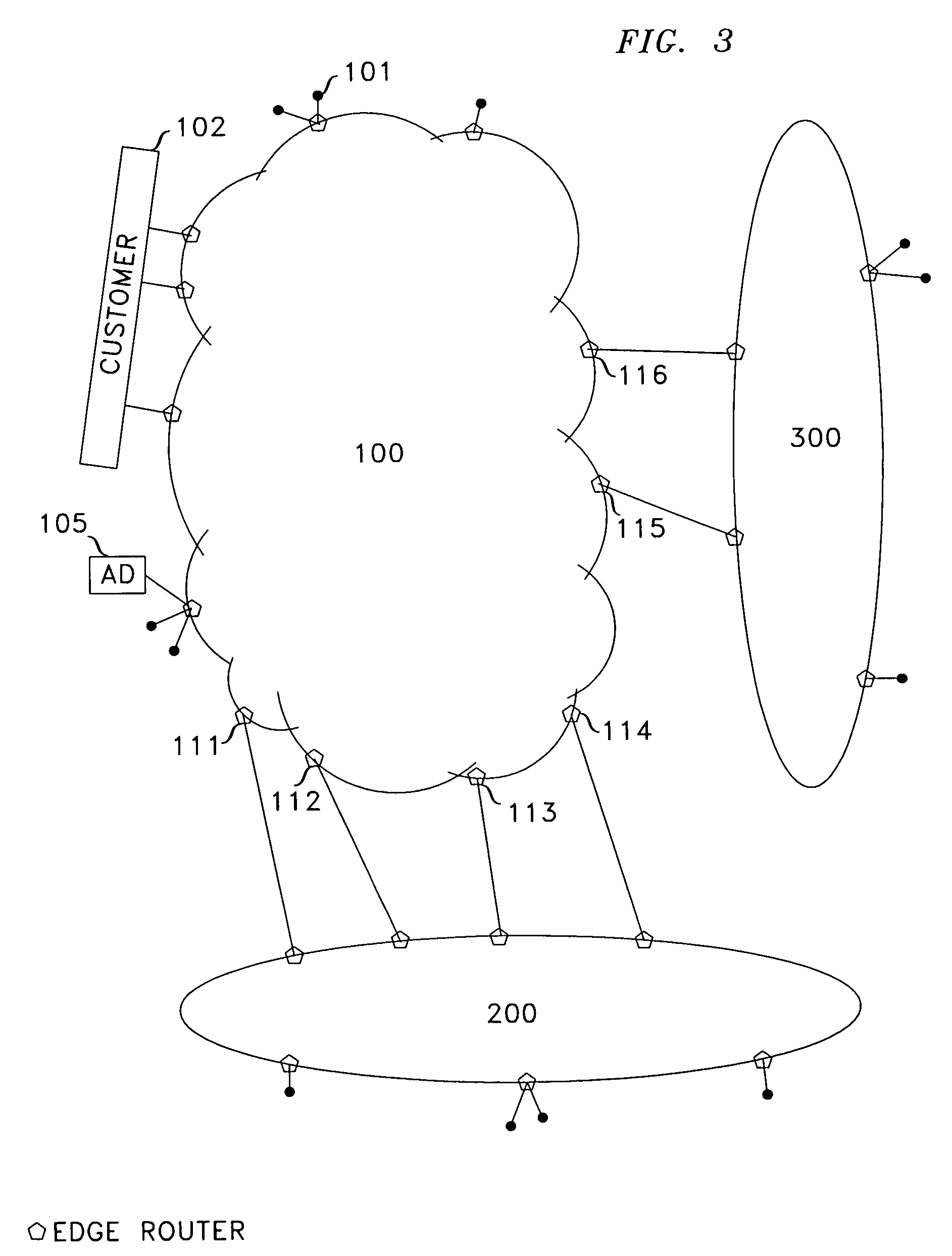Method for controlling traffic balance between peering networks
a peering network and traffic balance technology, applied in the field of peering network traffic balance control, can solve the problems of unbalanced transport cost burden among the various networks, uneven distribution of internet traffic, and inability to achieve the benefits of a settlement process
- Summary
- Abstract
- Description
- Claims
- Application Information
AI Technical Summary
Benefits of technology
Problems solved by technology
Method used
Image
Examples
Embodiment Construction
[0010]With reference to FIG. 1, given network 100 with customer 101, and network 200 with customer 201, traffic that is outgoing from customer 101 and destined to customer 201 is illustratively routed by the provider of network 100 via a path that includes links 110 and 111; it being the shortest path within network 100 to network 200 and presumably the least one. That forces network 200 to employ a route that includes link 220 from the point where link 111 enters network 200 to customer 201. Correspondingly for the return traffic that is outgoing from customer 201 and destined to customer 101, the provider of network 200 employs route 210; it being the shortest within network 200 and presumably the least expensive one. That forces network 100 to employ path 120 from the point where path 210 enters network 100 to customer 101.
[0011]The above-described approach of delivering traffic that is destined to another network by taking the shortest route within one's own network to that othe...
PUM
 Login to View More
Login to View More Abstract
Description
Claims
Application Information
 Login to View More
Login to View More - R&D
- Intellectual Property
- Life Sciences
- Materials
- Tech Scout
- Unparalleled Data Quality
- Higher Quality Content
- 60% Fewer Hallucinations
Browse by: Latest US Patents, China's latest patents, Technical Efficacy Thesaurus, Application Domain, Technology Topic, Popular Technical Reports.
© 2025 PatSnap. All rights reserved.Legal|Privacy policy|Modern Slavery Act Transparency Statement|Sitemap|About US| Contact US: help@patsnap.com



